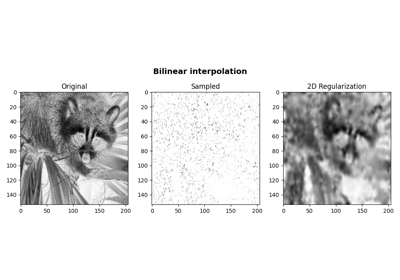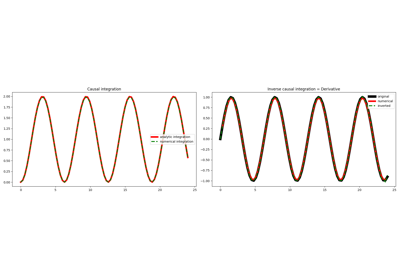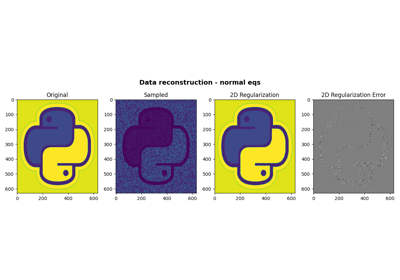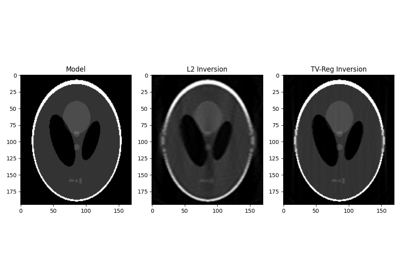pylops.Laplacian¶
- pylops.Laplacian(dims, axes=(-2, -1), weights=(1, 1), sampling=(1, 1), edge=False, kind='centered', dtype='float64')[source]¶
Laplacian.
Apply second-order centered Laplacian operator to a multi-dimensional array.
Note
At least 2 dimensions are required, use
pylops.SecondDerivativefor 1d arrays.- Parameters
- dims
tuple Number of samples for each dimension.
- axes
int, optional New in version 2.0.0.
Axes along which the Laplacian is applied.
- weights
tuple, optional Weight to apply to each direction (real laplacian operator if
weights=(1, 1))- sampling
tuple, optional Sampling steps for each direction
- edge
bool, optional Use reduced order derivative at edges (
True) or ignore them (False) for centered derivative- kind
str, optional Derivative kind (
forward,centered, orbackward)- dtype
str, optional Type of elements in input array.
- dims
- Returns
- l2op
pylops.LinearOperator Laplacian linear operator
- l2op
- Raises
- ValueError
If
axes.weights, andsamplingdo not have the same size
Notes
The Laplacian operator applies a second derivative along two directions of a multi-dimensional array.
For simplicity, given a two dimensional array, the Laplacian is:
\[y[i, j] = (x[i+1, j] + x[i-1, j] + x[i, j-1] +x[i, j+1] - 4x[i, j]) / (\Delta x \Delta y)\]




